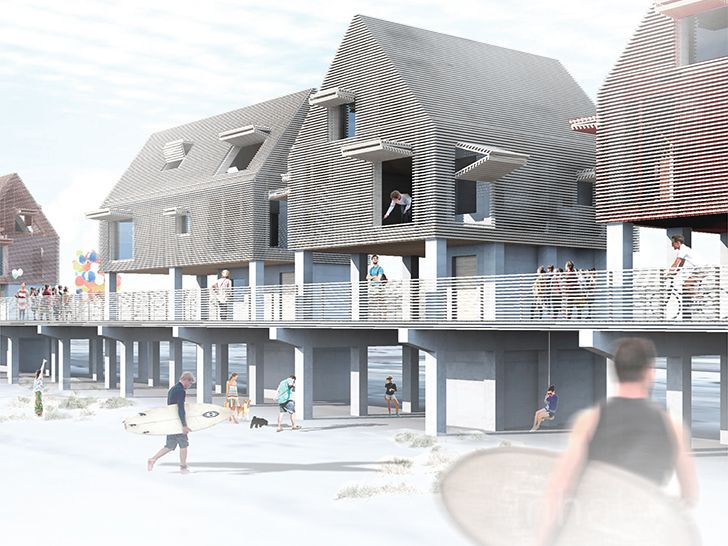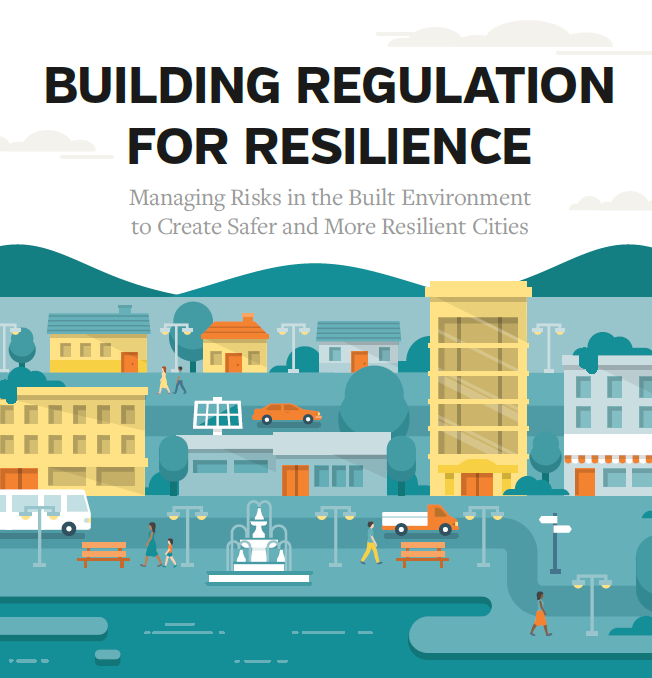In the intricate tapestry of modern digital operations, where applications and services underpin every facet of business, the ability of a system to withstand disruptions, gracefully recover from failures, and continuously operate despite adverse conditions is no longer a luxury—it’s a non-negotiable imperative. This critical capability defines resilient system building. It’s the meticulous art and rigorous science of designing, developing, and deploying systems that can absorb shocks, adapt to change, and maintain their intended functionality even when parts inevitably fail. Achieving true resilience means proactively anticipating pitfalls, implementing robust fault-tolerant mechanisms, and fostering an operational culture that embraces inevitable imperfections, ultimately ensuring an uninterrupted digital experience for users and sustained business continuity.
The Unforgiving Reality: Why Resilient Systems Are Essential
To fully grasp the critical importance of designing for resilience, one must first confront the harsh realities of operating complex digital systems in a perpetually evolving landscape. Failures are not an exception; they are an inherent part of the equation.
A. The Inevitability of Failure
No system, however meticulously designed, is immune to failure. Hardware degrades, software bugs emerge, networks experience outages, human errors occur, and external dependencies can become unavailable. The notion of a perfectly flawless system is a myth; embracing the inevitability of failure is the first step towards building resilience.
- Hardware Malfunctions: Hard drives crash, memory modules fail, power supplies falter, and network cards can die. Physical components have finite lifespans and can spontaneously fail.
- Software Bugs and Glitches: Despite rigorous testing, software applications inherently contain bugs, memory leaks, or logical errors that can manifest under specific conditions, leading to crashes or unpredictable behavior.
- Network Instabilities: The internet is a vast, distributed network of networks. Latency spikes, packet loss, DNS resolution issues, or backbone outages can disrupt connectivity to or within a system.
- Human Error: Configuration mistakes, incorrect deployments, accidental deletions, or mismanaged changes by operators or developers are consistently cited as leading causes of system outages.
- External Dependencies: Most modern applications rely on numerous external services, APIs, or third-party providers (e.g., payment gateways, mapping services, authentication providers). The availability and performance of your system are inherently tied to the reliability of these external components, which are outside your direct control.
B. The Soaring Cost of Downtime
In an always-on economy, system downtime translates directly into tangible and intangible costs, making resilience a financial imperative.
- Direct Financial Losses: For e-commerce sites, every minute of downtime can mean thousands or millions in lost sales. For financial institutions, it can be even higher. Service outages disrupt transactions, leading to direct revenue loss.
- Reputational Damage: Beyond immediate financial impact, sustained or frequent outages severely erode customer trust and loyalty. A brand’s reputation, painstakingly built over years, can be severely tarnished in moments by system unreliability, leading to long-term customer churn.
- Operational Disruptions: Internal systems (e.g., CRM, ERP, internal communication tools) also suffer. Downtime for these systems can halt employee productivity, delay critical business processes, and incur significant recovery costs.
- Compliance and Legal Penalties: In regulated industries (e.g., healthcare, finance), downtime or data loss due to system failure can lead to hefty fines, legal action, and a loss of regulatory compliance.
- Employee Morale and Burnout: Constant firefighting due to unreliable systems leads to stress, burnout, and high turnover rates among engineering and operations teams, impacting long-term productivity and innovation.
C. The Pressure of Constant Change and Growth
Modern systems are rarely static. They are under continuous pressure to evolve, integrate new features, and handle increasing loads. Resilience must be built into this dynamic environment.
- Continuous Delivery: Agile methodologies and DevOps practices demand frequent deployments. Each deployment carries a risk of introducing issues, highlighting the need for systems that can gracefully handle change.
- Rapid User Growth: Viral growth or successful marketing campaigns can lead to sudden, massive spikes in user traffic. Systems must be able to scale rapidly and maintain performance without breaking.
- Evolving Threat Landscape: Cybersecurity threats are constantly evolving. Resilient systems must not only recover from operational failures but also withstand and recover from cyberattacks, making security a crucial aspect of resilience.
Foundational Pillars of Resilient System Design
Building resilient systems is not about avoiding failures but about anticipating them and designing the system to cope. This requires focusing on several core architectural pillars.
A. Redundancy: Eliminating Single Points of Failure
The most fundamental principle of resilience is redundancy. This involves duplicating critical components or data so that if one fails, a backup can immediately take over, preventing service interruption.
- Component Redundancy: Instead of a single application server, deploy multiple identical instances behind a load balancer. If one instance fails, traffic is simply routed to the healthy ones.
- Data Redundancy: Replicate databases across multiple servers or geographical locations. Use distributed storage systems that store multiple copies of data.
- Network Redundancy: Implement redundant network paths, multiple internet service providers (ISPs), and redundant network devices (routers, switches) to ensure connectivity.
- Power Redundancy: For physical data centers, this means redundant power supplies, uninterruptible power supplies (UPS), and backup generators. In the cloud, this is largely handled by the provider’s highly available infrastructure.
B. Fault Isolation and Containment
Even with redundancy, failures can occur. Fault isolation aims to contain the impact of a failure to the smallest possible part of the system, preventing it from cascading and bringing down the entire application.
- Microservices Architecture: By breaking down a monolithic application into small, independent services, a failure in one service is less likely to affect others. Each service can fail independently.
- Bulkhead Pattern: Isolate different parts of the application or different customer types into separate resource pools (e.g., separate threads, connection pools, or even distinct service deployments). This prevents a failure or overload in one pool from exhausting resources in others.
- Separate Deployments/Environments: For critical components or new features, deploy them in isolated environments or use canary deployments to limit the blast radius of any issues.
C. Graceful Degradation: Maintaining Core Functionality
A truly resilient system doesn’t just fail or fully succeed; it can gracefully degrade. This means that when a non-critical component fails or becomes overloaded, the system can shed non-essential features while maintaining core functionality.
- Feature Toggles/Flags: Allow developers to enable or disable features dynamically. If a new feature causes issues, it can be quickly turned off without redeploying the entire application.
- Prioritization of Workloads: When under stress, the system can prioritize critical operations over less important ones. For example, in an e-commerce site, processing payments might take precedence over generating personalized recommendations.
- Caching and Stale Data: If a backend service is unavailable, the system might serve cached or slightly stale data instead of returning an error, preserving a basic level of functionality.
D. Rapid Recovery and Automated Healing
Resilience is not just about preventing failure; it’s crucially about how quickly a system can recover when failure inevitably occurs. Rapid recovery and automated healing are key.
- Automated Restarts and Self-Healing: Implement mechanisms (e.g., Kubernetes liveness/readiness probes, health checks) to automatically detect unhealthy components and restart or replace them.
- Fast Rollbacks: The ability to quickly revert to a previous, stable version of code or infrastructure configuration in case of a problematic deployment.
- Automated Failover: Configure services (especially databases and stateful applications) to automatically switch to a healthy replica if the primary instance fails, minimizing downtime.
- Infrastructure as Code (IaC): Allows for rapid, consistent, and repeatable recreation of infrastructure components from code, facilitating faster recovery from catastrophic events.
E. Observability: Seeing the Invisible
You cannot build resilience if you cannot understand your system’s behavior, especially under stress. Comprehensive observability is critical.
- Metrics: Collect granular metrics on system performance (CPU, memory, network I/O, latency, throughput), application-specific KPIs (request rates, error rates, queue depths), and business metrics.
- Logging: Centralize structured logs from all services and infrastructure components. This provides detailed event histories for debugging and post-mortem analysis.
- Tracing: Implement distributed tracing (e.g., OpenTelemetry, Jaeger) to visualize the flow of requests across multiple services in a distributed system, pinpointing bottlenecks and points of failure in complex interactions.
- Alerting: Set up intelligent, proactive alerts for anomalies, performance degradations, or errors that could indicate an impending or ongoing issue, enabling rapid human or automated response.
F. Simplicity and Maintainability
Counter-intuitively, complex systems are harder to make resilient. Strive for simplicity and maintainability in design.
- Minimal Dependencies: Reduce the number of external and internal dependencies where possible. Each dependency is a potential point of failure.
- Clear Boundaries: Define clear responsibilities and interfaces for each component or service.
- Well-Documented Systems: Ensure architectures, runbooks, and disaster recovery procedures are well-documented and accessible.
- Testability: Design components to be easily testable, facilitating robust unit, integration, and chaos testing.
Common Pitfalls to Avoid in Resilient System Building
Even with a strong understanding of principles, certain common mistakes can undermine efforts to build resilient systems. Awareness of these pitfalls is key to avoiding them.
A. Overlooking Single Points of Failure (SPOFs)
A frequent and critical pitfall is the failure to identify and eliminate single points of failure (SPOFs). An SPOF is any component whose failure would bring down the entire system.
- Untrusted Third-Party Services: Over-reliance on a single third-party API or service without a fallback mechanism. If that service goes down, your system becomes inoperable.
- Centralized Data Stores: Using a single, non-replicated database instance for all critical data. If that instance fails, all data is lost or inaccessible.
- Unredundant Network Paths: A single router, switch, or internet connection whose failure brings down connectivity.
- Lack of Load Balancing: Directing all traffic to a single server instance, making it an SPOF and a performance bottleneck.
Solution: Conduct thorough SPOF analysis. Implement redundancy at every layer (component, data, network, power). Utilize cloud provider’s managed, highly available services.
B. Neglecting Failure Modes and Edge Cases
Systems often perform well under normal operating conditions, but fail spectacularly when faced with unforeseen failure modes or unusual edge cases. This comes from an insufficient understanding of how failures propagate.
- Ignoring Network Latency/Partitioning: Assuming network communication is always reliable and fast. Distributed systems must account for network delays and partitions.
- Insufficient Error Handling and Retries: Not implementing robust error handling, intelligent retries (with exponential backoff and jitter), and circuit breakers. This can lead to cascading failures as retries overwhelm already struggling services.
- Overlooking Resource Exhaustion: Failing to anticipate resource limits (CPU, memory, database connections, open files) and designing for graceful degradation or backpressure when these limits are approached.
- Underestimating Dependencies: Not fully mapping out all internal and external dependencies and understanding their potential failure modes.
Solution: Conduct thorough failure analysis. Implement chaos engineering to proactively inject failures. Use formal threat modeling and architectural reviews to identify edge cases. Design defensive programming (retry logic, timeouts, circuit breakers).
C. Inadequate Testing for Resilience
Building resilient systems isn’t just about coding; it’s about testing how the system behaves under adverse conditions. Inadequate testing for resilience is a major oversight.
- Only Testing Happy Paths: Focusing solely on functional testing under ideal conditions, neglecting to test failure scenarios.
- Lack of Load/Stress Testing: Not subjecting the system to anticipated peak loads or sudden traffic spikes to identify performance bottlenecks or scaling limits.
- Absence of Chaos Engineering: Failing to proactively inject failures into the system (e.g., randomly shutting down instances, inducing network latency) to discover weaknesses before they occur in production.
- Insufficient Disaster Recovery Drills: Not regularly practicing and refining disaster recovery plans. A plan is only as good as its last successful drill.
Solution: Integrate performance, load, and stress testing into CI/CD. Adopt chaos engineering practices. Regularly conduct full-scale disaster recovery drills, treating them as production events.
D. Insufficient Monitoring and Alerting
A system can be highly resilient by design, but without proper monitoring and alerting, you won’t know when it’s failing, or worse, when it’s about to fail.
- “Blind Spots”: Not collecting metrics or logs from critical components or external dependencies.
- Too Much Noise (Alert Fatigue): Setting up too many trivial alerts, leading operators to ignore critical ones.
- Lack of Context: Alerts that don’t provide sufficient context to quickly diagnose the problem (e.g., just ‘CPU high’ without knowing which process or service is causing it).
- Reactive vs. Proactive: Only alerting when a system has already failed, rather than using predictive metrics to alert on anomalies that might indicate impending failure.
Solution: Implement comprehensive, actionable monitoring and logging. Focus on key performance indicators (KPIs) and business metrics. Use intelligent alerting thresholds and incorporate distributed tracing for context. Aim for proactive anomaly detection.
E. Neglecting Data Backup and Recovery Strategies
Even the most resilient compute infrastructure can be rendered useless if critical data is lost or corrupted. Neglecting robust data backup and recovery strategies is a critical pitfall.
- Infrequent Backups: Not backing up data frequently enough, leading to high Recovery Point Objectives (RPOs – how much data you can afford to lose).
- Untested Backups: Backing up data but never testing the restore process. A backup is only valuable if it can be successfully restored.
- Single Location Backups: Storing all backups in a single location, making them vulnerable to regional outages or disasters.
- Lack of Data Versioning: Not keeping multiple versions of data, making it impossible to recover from logical corruption or accidental deletions.
Solution: Implement automated, frequent, and geographically redundant backups. Regularly test your data restoration process. Leverage immutable storage and versioning for backups. Define clear RPOs and Recovery Time Objectives (RTOs).
F. Underestimating Complexity of Distributed Systems
Moving from monolithic applications to distributed systems (like microservices) inherently increases complexity. Underestimating this complexity leads to architectural missteps.
- Distributed Transaction Challenges: Attempting to implement traditional ACID transactions across multiple services, which is inherently difficult and often leads to performance bottlenecks or complex compensation logic (Sagas).
- Consistency Models Misunderstanding: Not understanding the trade-offs between strong consistency and eventual consistency in distributed data stores.
- Configuration Management Sprawl: Managing configurations for many services manually, leading to inconsistencies and errors.
- Network Overhead: Not accounting for the latency and potential unreliability of network calls between services.
Solution: Embrace eventual consistency where appropriate. Use message queues for asynchronous communication. Employ Infrastructure as Code (IaC) for consistent configuration. Leverage service meshes for managing inter-service communication complexity.
G. Absence of a Blameless Post-Mortem Culture
When failures occur (and they will), a critical pitfall is focusing on blame rather than learning. The absence of a blameless post-mortem culture hinders continuous improvement.
- Blame Game: Focusing on who caused the outage rather than what systemic factors contributed to it. This discourages honesty and prevents deep learning.
- Incomplete Analysis: Not conducting thorough investigations to identify root causes and contributing factors.
- Lack of Follow-Through: Documenting lessons learned but failing to implement corrective actions or track their effectiveness.
Solution: Adopt a blameless post-mortem culture. Focus on systemic improvements, not individual culpability. Document findings transparently. Assign clear action items and track their completion. Share learnings across the organization.
Best Practices for Building Truly Resilient Systems
Moving beyond avoiding pitfalls, actively integrating specific best practices is essential for achieving and maintaining high levels of system resilience.
A. Design for Failure, Not Against It
Adopt the mindset that failures are inevitable and design your system to anticipate and gracefully handle them. This means baking in fault tolerance from the ground up, rather than trying to prevent every single point of failure. Ask “what if this fails?” for every component. This is the core philosophy of resilience engineering.
B. Implement Redundancy at Every Critical Layer
Ensure that every component whose failure would impact your core service has a redundant counterpart. This includes:
- Application Instances: Multiple instances behind a load balancer (horizontal scaling).
- Databases: Replication (read replicas, multi-AZ deployments).
- Networking: Redundant network paths, multiple internet gateways.
- Power and Facilities: (Cloud providers handle this largely, but consider regional diversity).
- External Dependencies: Consider fallback mechanisms or alternative providers if a critical third-party service fails.
C. Embrace Microservices and Event-Driven Architectures
For complex applications, transition from monolithic designs to microservices architecture. This naturally fosters fault isolation. Combine this with event-driven patterns (using message queues or streaming platforms) to promote asynchronous communication and loose coupling, further enhancing resilience by decoupling producers from consumers and allowing independent scaling.
D. Automate Everything with Infrastructure as Code (IaC) and CI/CD
Manual processes introduce errors and slow recovery. Utilize Infrastructure as Code (IaC) (e.g., Terraform, CloudFormation) to define and provision your infrastructure consistently and idempotently. Pair this with robust Continuous Integration/Continuous Delivery (CI/CD) pipelines to automate building, testing, and deploying your code and infrastructure changes. Automated rollbacks are also crucial.
E. Prioritize Observability: Metrics, Logs, Traces
You can’t manage what you can’t see. Invest heavily in a comprehensive observability stack. Collect granular metrics on application and infrastructure performance. Centralize all logs for easy analysis. Implement distributed tracing to visualize request flows across services. Set up intelligent, actionable alerts that proactively notify you of issues before they become critical.
F. Implement Robust Error Handling, Retries, and Circuit Breakers
Defensive programming is key. Ensure your application code includes:
- Graceful Error Handling: Catch exceptions and provide informative error messages without exposing sensitive data.
- Intelligent Retries: For transient failures, implement retry mechanisms with exponential backoff and jitter to avoid overwhelming a struggling service.
- Circuit Breaker Pattern: Protect your application from repeatedly calling a failing service. Open the circuit to stop calls temporarily, allowing the service to recover.
- Timeouts: Set appropriate timeouts for all network calls and external service integrations to prevent indefinite hangs.
G. Design for Graceful Degradation and Feature Toggles
Plan for scenarios where not all parts of the system can be fully functional.
- Feature Toggles: Use feature flags to quickly enable/disable non-critical features without code deployments. This allows for rapid response to issues or controlled rollout of new features.
- Fallback Mechanisms: If a service fails, can you provide a degraded experience (e.g., show cached data, simpler UI, reduced functionality) instead of a full error?
- Prioritization: Implement logic to prioritize critical business functions over non-essential ones during periods of stress.
H. Rigorously Test for Resilience (Chaos Engineering & DR Drills)
Don’t just test if your system works; test if it breaks gracefully and recovers quickly.
- Chaos Engineering: Proactively inject failures (e.g., network latency, instance termination, CPU spikes) into your production or staging environments to discover weaknesses before they cause real outages. Tools like Gremlin or Chaos Mesh can facilitate this.
- Disaster Recovery (DR) Drills: Regularly practice your disaster recovery plans end-to-end. Treat these drills as real incidents, measure RTO/RPO, and identify areas for improvement. Automate as much of the DR process as possible.
I. Secure Your System from the Ground Up
Resilience includes protection against malicious attacks. Integrate security into every phase of your design and development.
- Least Privilege: Grant users and services only the minimum necessary permissions.
- Secure by Design: Build security into your application code and infrastructure from the start (e.g., input validation, secure coding practices, encryption).
- Regular Audits and Penetration Testing: Continuously assess your security posture.
- Automated Security Scans: Integrate static and dynamic application security testing into your CI/CD pipelines.
J. Foster a Blameless Culture of Continuous Learning
When incidents occur, prioritize learning over blaming. Conduct blameless post-mortems to identify systemic weaknesses, root causes, and contributing factors. Document findings transparently and ensure that actionable improvements are identified, prioritized, and implemented. This culture encourages honesty, fosters psychological safety, and drives continuous improvement in system resilience.
The Future of Resilient System Building
The pursuit of resilience is an ongoing journey, constantly adapting to new technologies and evolving threats. Several trends are shaping the future of resilient system building:
A. AI-Powered Anomaly Detection and Self-Healing
Artificial Intelligence and Machine Learning are increasingly being leveraged for AI-powered anomaly detection in monitoring data. Instead of relying on static thresholds, AI can identify subtle deviations from normal behavior, predicting potential failures before they manifest as outages. Furthermore, AI is paving the way for more sophisticated self-healing systems that can autonomously diagnose and remediate common issues without human intervention.
B. Proactive Chaos Engineering Integration
Chaos engineering will move from a specialized practice to a more integrated, continuous process within development and operations. Tools will become more user-friendly, allowing teams to regularly and safely run a wider variety of experiments to uncover hidden vulnerabilities and validate resilience mechanisms as part of the standard CI/CD pipeline. The goal is to build muscle memory for failure.
C. Resilience as a Service (RaaS)
Cloud providers and third-party vendors are offering more specialized Resilience as a Service (RaaS) offerings. This might include managed disaster recovery solutions, advanced chaos engineering platforms, or specialized services that automatically apply resilience patterns (like circuit breakers) to microservices without extensive manual configuration. This abstracts away some of the complexity, making advanced resilience more accessible.
D. Shift-Left Security and Resilience Testing
The trend of “shifting left” will intensify, pushing security and resilience testing earlier into the development lifecycle. This means integrating automated security scans, performance testing, and even lightweight chaos experiments directly into developer workstations and CI environments, catching issues long before they reach production.
E. Observability-Driven Development and Operations
Observability will evolve from a post-deployment concern to a driving force behind design and development. Developers will be empowered with rich telemetry from their local development environments and early testing phases, allowing them to build more resilient components from the outset. Operational decisions will be increasingly data-driven, leveraging comprehensive insights.
F. Automated Governance and Policy Enforcement
With the rise of Infrastructure as Code and Policy as Code, organizations will implement automated governance to enforce resilience standards. Policies will automatically ensure that services meet redundancy requirements, adhere to fault isolation principles, and have necessary monitoring configured before they can be deployed, preventing deviations from desired resilient states.
Conclusion
In an era defined by continuous change and digital dependency, resilient system building stands as the definitive blueprint for sustained business success. It is a proactive, multifaceted discipline that acknowledges the inevitability of failure and strategically designs systems to not only withstand disruptions but also to learn, adapt, and recover gracefully. By rigorously applying foundational principles like redundancy, fault isolation, graceful degradation, and rapid recovery, organizations can engineer software that delivers unwavering performance even in the face of adversity.
The journey to true resilience demands more than just technical prowess; it requires a deep commitment to observability, robust automation, continuous testing (including the strategic use of chaos engineering), and a blameless culture of continuous learning. As technology continues its relentless march forward, integrating advancements like AI-powered self-healing and more sophisticated testing, the principles of resilient design will remain the bedrock upon which the most robust, available, and future-proof digital experiences are constructed. For any enterprise seeking to navigate the inherent uncertainties of the digital landscape and maintain an uninterrupted connection with its customers, mastering resilient system building is not merely an option—it is the ultimate competitive advantage.














